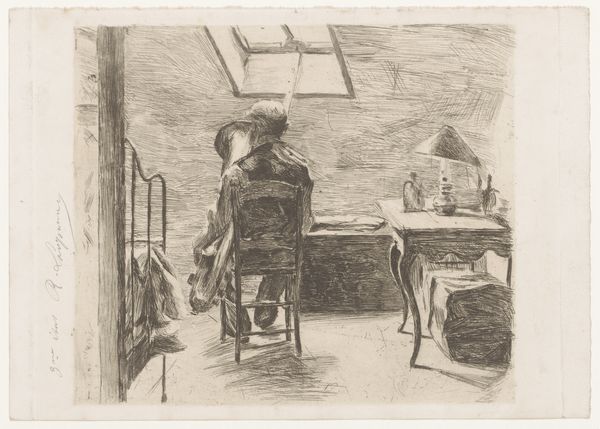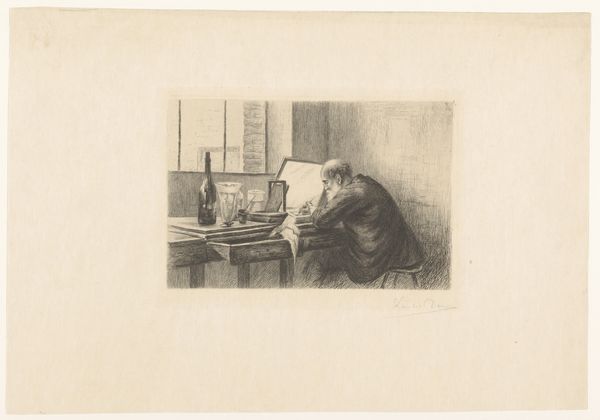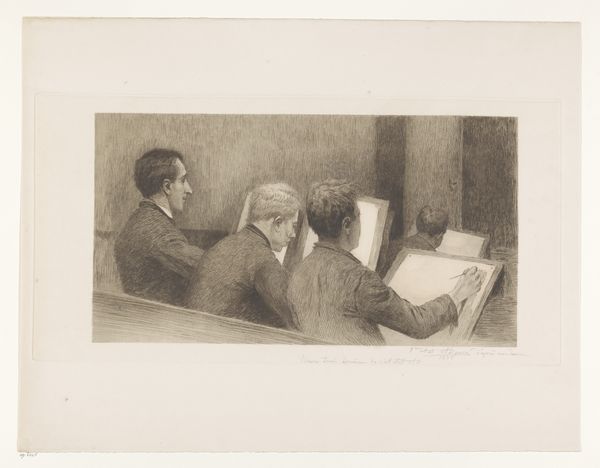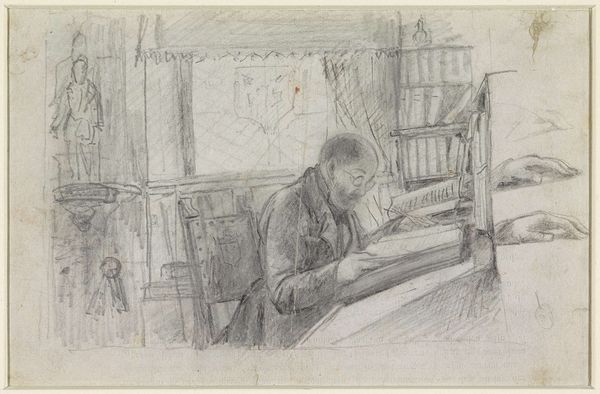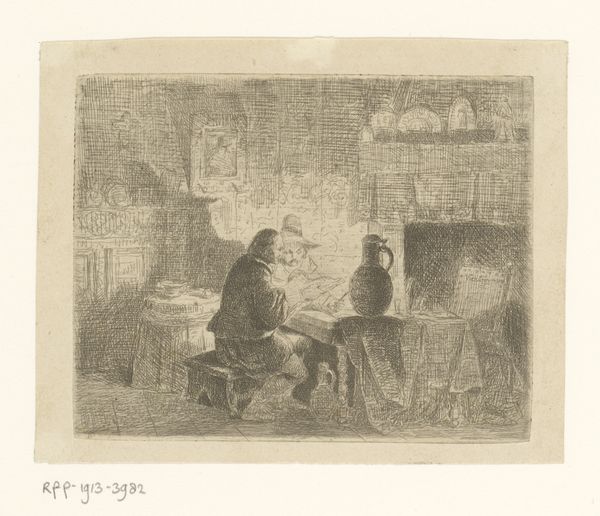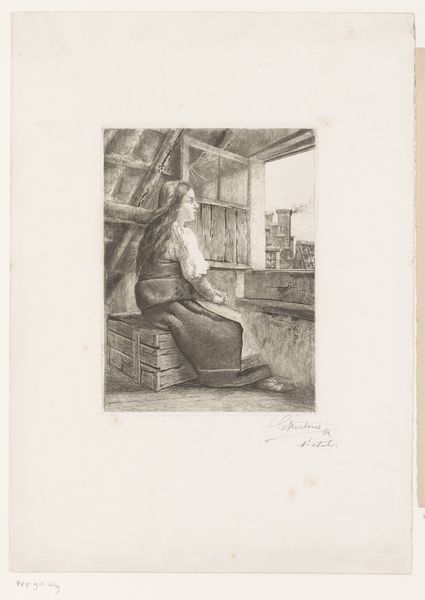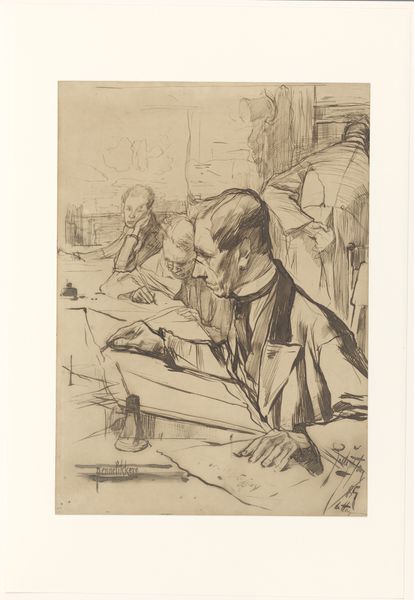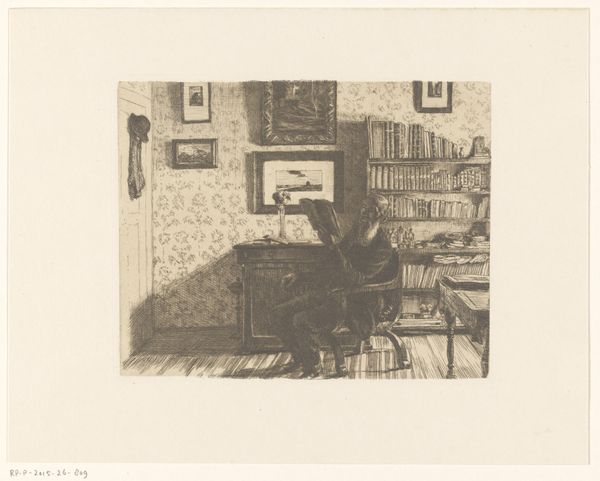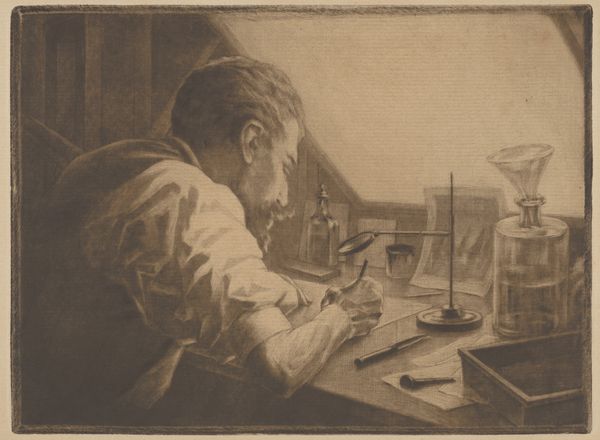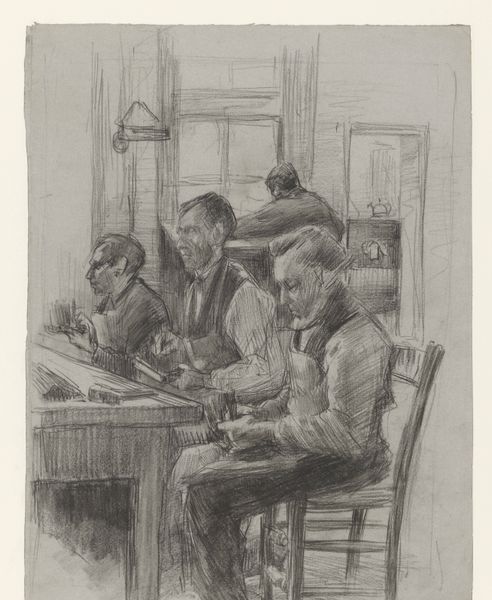
Kamer in de gevangenis met lezende mensen aan een tafel, 1942 1942
0:00
0:00
drawing, pencil
#
portrait
#
drawing
#
figuration
#
pencil
Dimensions: height 24.0 cm, width 34.5 cm
Copyright: Rijks Museum: Open Domain
Editor: This drawing, "Kamer in de gevangenis met lezende mensen aan een tafel, 1942" by Cor van Teeseling, held at the Rijksmuseum, depicts people in what seems like a prison cell. It’s a rather bleak scene, rendered in pencil. What strikes me most is the overwhelming sense of confinement and sorrow. What do you see in this piece? Curator: Beyond the immediate depiction of incarceration, I see a profound commentary on the psychological impact of oppression and the power of solidarity under duress. Consider the historical context: 1942, during the Nazi occupation of the Netherlands. What narratives might these "lezende mensen," or reading people, be engaging with? How does the act of reading, within the confines of a prison cell, become an act of resistance? Editor: That’s a great point. I hadn't considered the act of reading as a form of resistance itself. I suppose it's about maintaining intellectual freedom, even when physical freedom is taken away. Curator: Precisely! And let’s think about the power dynamics at play. Who is allowed access to information? Who gets to control the narrative? The act of sharing knowledge, of maintaining a connection to the outside world through literature or news, is inherently subversive. This challenges the authority that seeks to silence and control. Do you notice any specific details, perhaps in the composition or the subjects’ expressions, that reinforce this sense of defiance? Editor: I see how their close proximity at the table can signal a strong bond...it reflects mutual support despite their predicament. They find a way to share information even within confinement. It now brings me a sense of hope in these conditions. Curator: Absolutely. And consider, too, the choice of medium: pencil, readily available, easily concealed. This wasn’t some grand commission but likely a personal testament, smuggled out to bear witness. Understanding those layers of historical and material context brings another whole level to it. Editor: This has been enlightening. Now I see this simple drawing as a powerful message of hope. Thank you. Curator: Indeed, it reminds us of art’s capacity to both reflect and resist even the harshest realities.
Comments
No comments
Be the first to comment and join the conversation on the ultimate creative platform.
